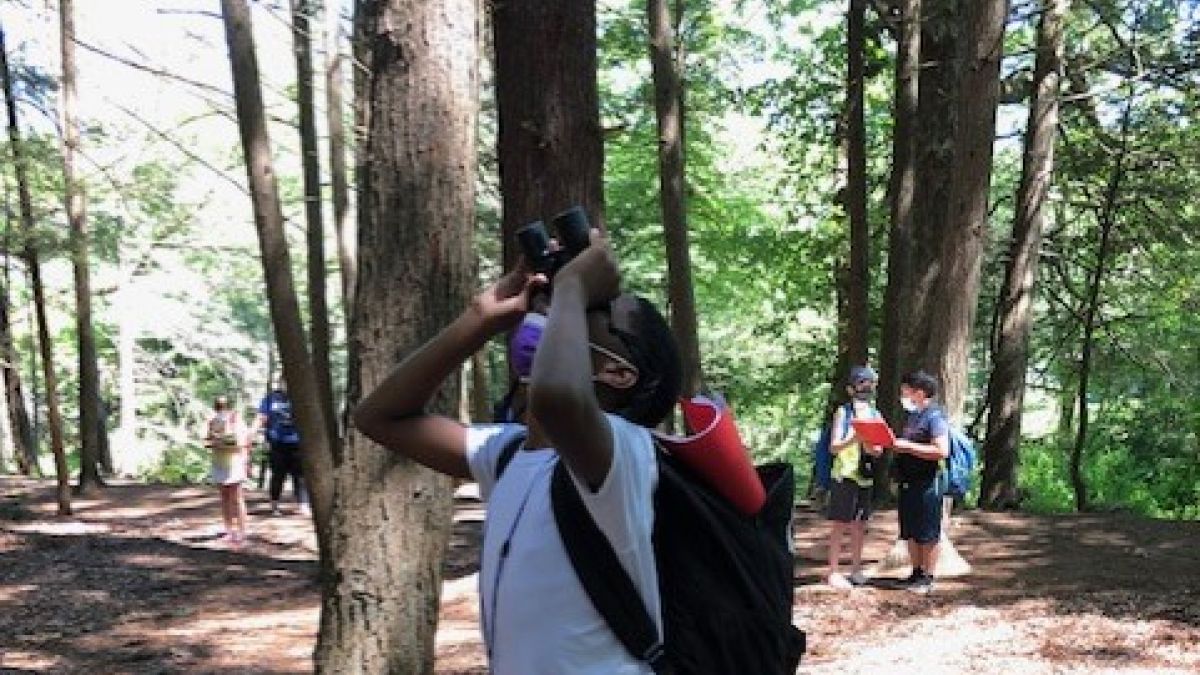Diving into eeBLUE: NAAEE Partnered with NOAA to Offer Watershed STEM Education Grants
NAAEE, in partnership with NOAA and funded by the U.S. Department of Education, awarded $2.45 million to 30 environmental education organizations that partner with NOAA to provide enriching after-school watershed-related STEM (science, technology, engineering, and mathematics) projects.
The eeBLUE 21st CCLC Watershed STEM Education Partnership Grants, administered by NAAEE and running from 2020–2022, allowed environmental education organizations to collaborate directly with the 21st CCLC sites on the design and implementation of locally relevant, out-of-school-time programs that develop students’ environmental literacy and leadership skills as they improve their communities.
These grants supported programming for a total of 100 local Nita M. Lowey 21st Century Community Learning Centers (21st CCLC) sites and their students, many of whom live in high-poverty and underserved areas. The 30 selected projects served 18 states, ranging from Alaska to Florida.
Program Outcomes
- Students learned about STEM while also building leadership and advocacy skills by participating in exciting hands-on learning activities and connecting to nature. All Watershed STEM Grantees and partners adapted to meet the needs of the students according to current health and safety guidelines. Please note that proposals were submitted prior to COVID-19.
- Watershed STEM grantees offered virtual professional development opportunities and planning with partners to ensure that their projects were tailored to evolving partner and community needs.
- Staff also gained from the partnership, strengthening both environmental literacy and teaching skills. Watershed STEM grantees and 21st CCLC partners delivered authentic STEM experiences that used components of the NOAA Bay Watershed Education and Training (B-WET) Meaningful Watershed Educational Experience (MWEE) model along with other NOAA assets and expertise.
Image
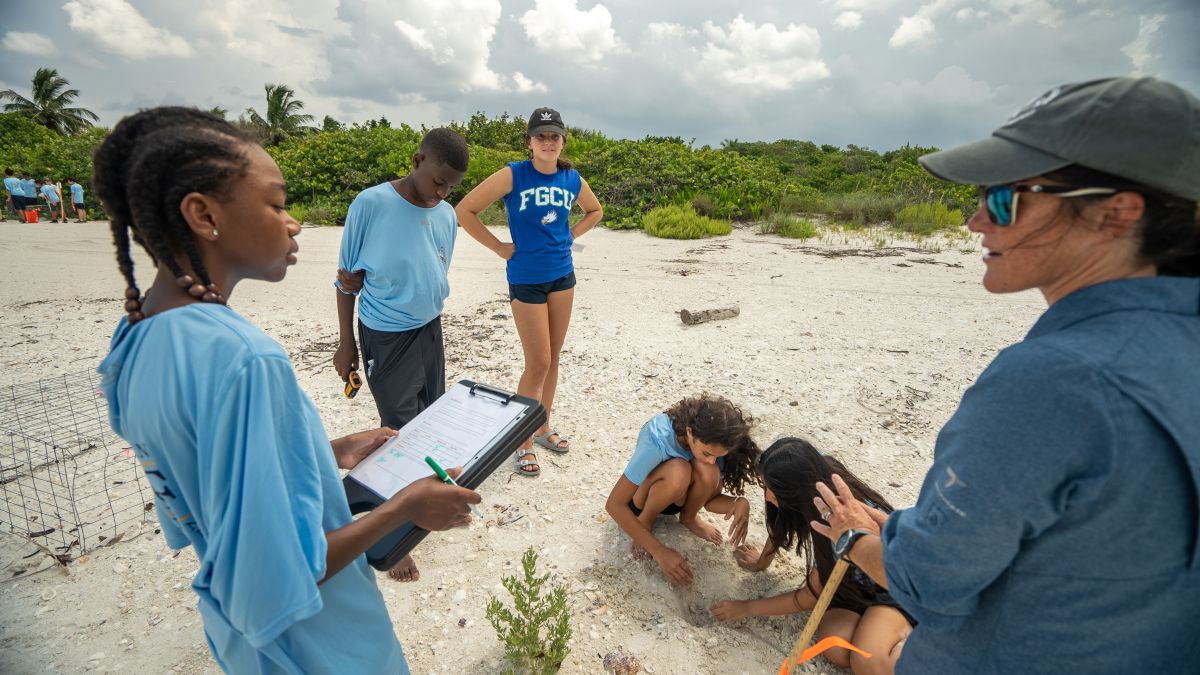
Program Evaluation Report
Read the overarching findings from the evaluation of the 2020–2022 NOAA 21st CCLC Watershed STEM Education Partnership grants program and considerations for future programs. This report was produced by the Education Development Center (EDC).
Read the executive summary >
Read the evaluation report >
Read the appendices >
Learn more about the EDC's culturally responsive evaluation of the eeBLUE Watershed STEM Education Partnership Grants Program in "A Promising Approach to Building Youth's Environmental Literacy," published on the EDC website.
eeBLUE 21CCLC STEM Grantee Program Evaluation Infographics
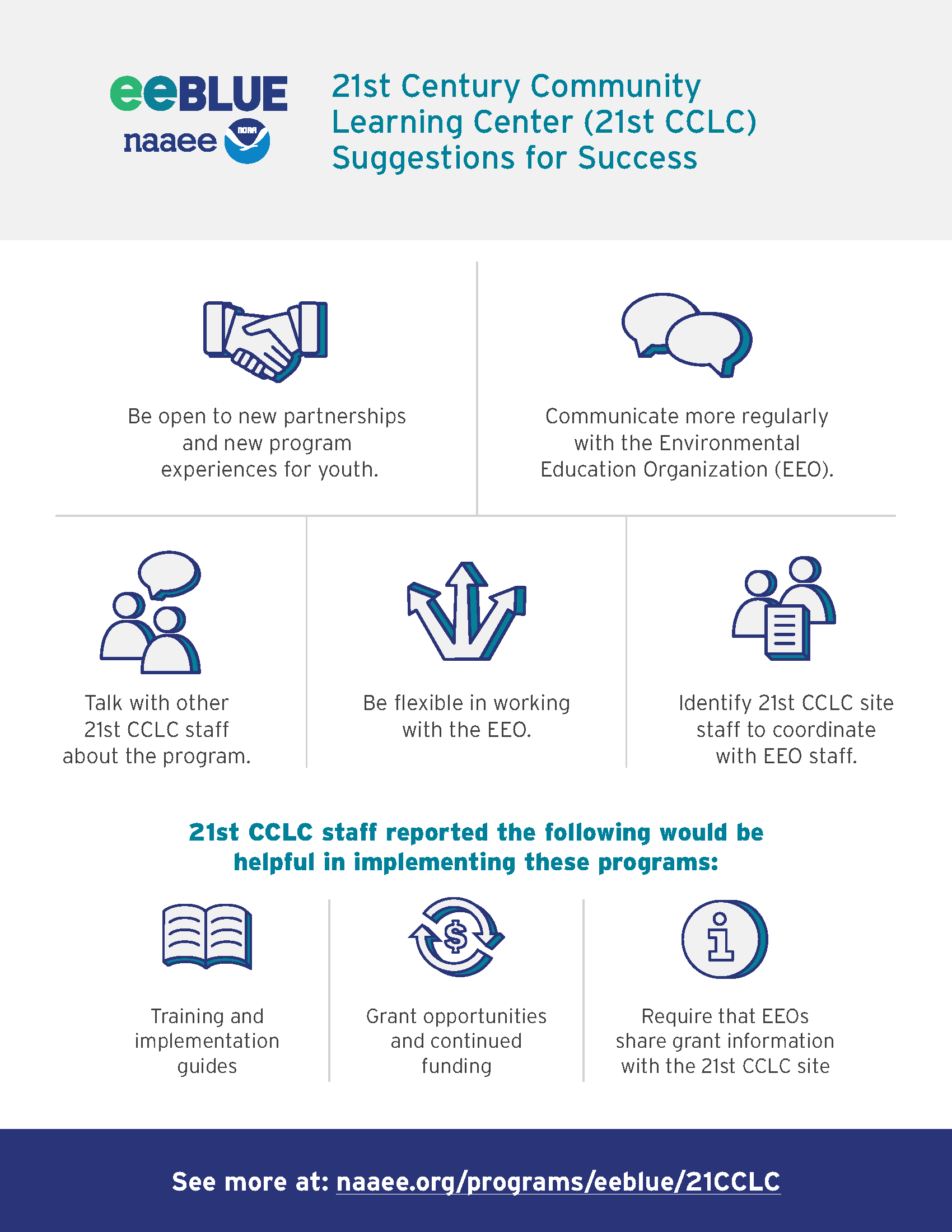
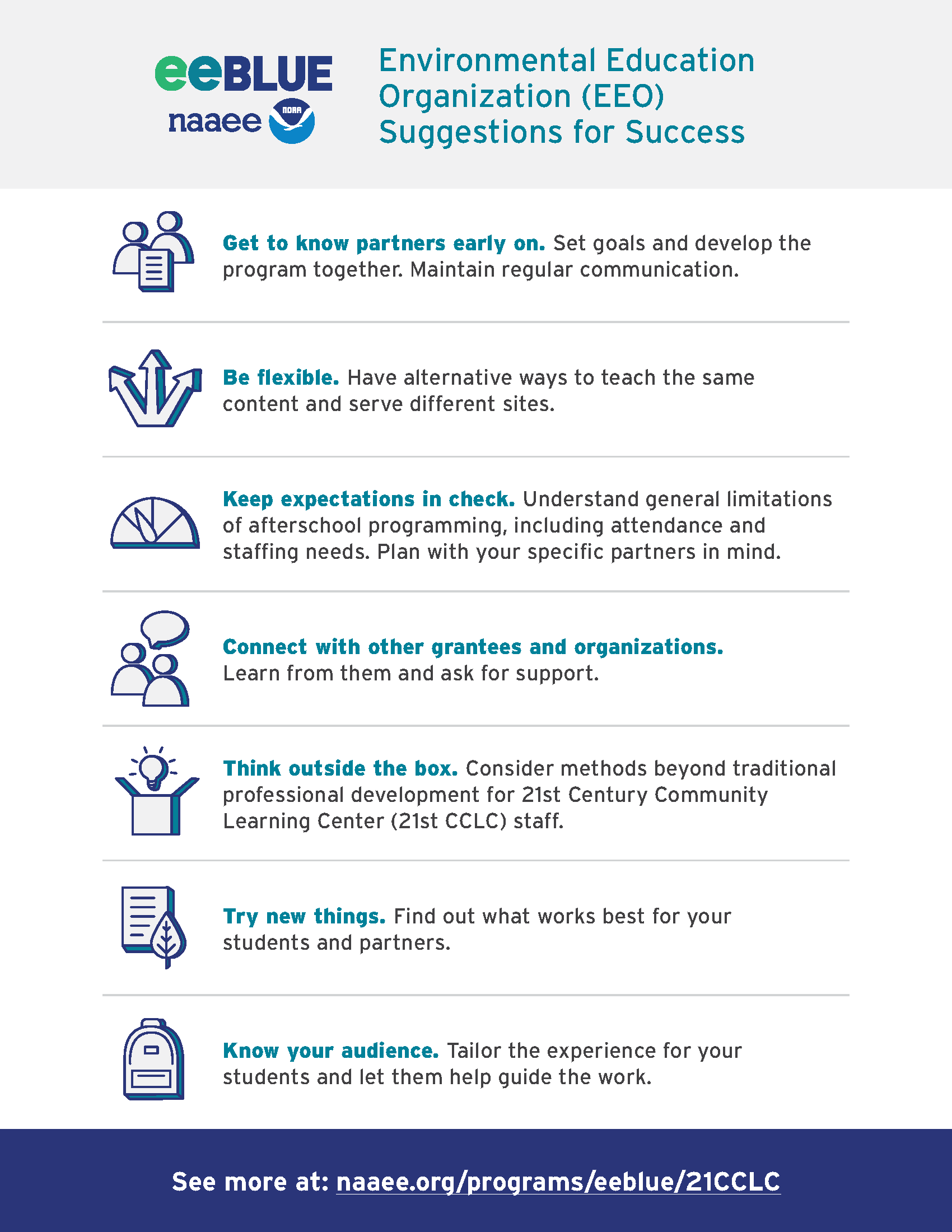
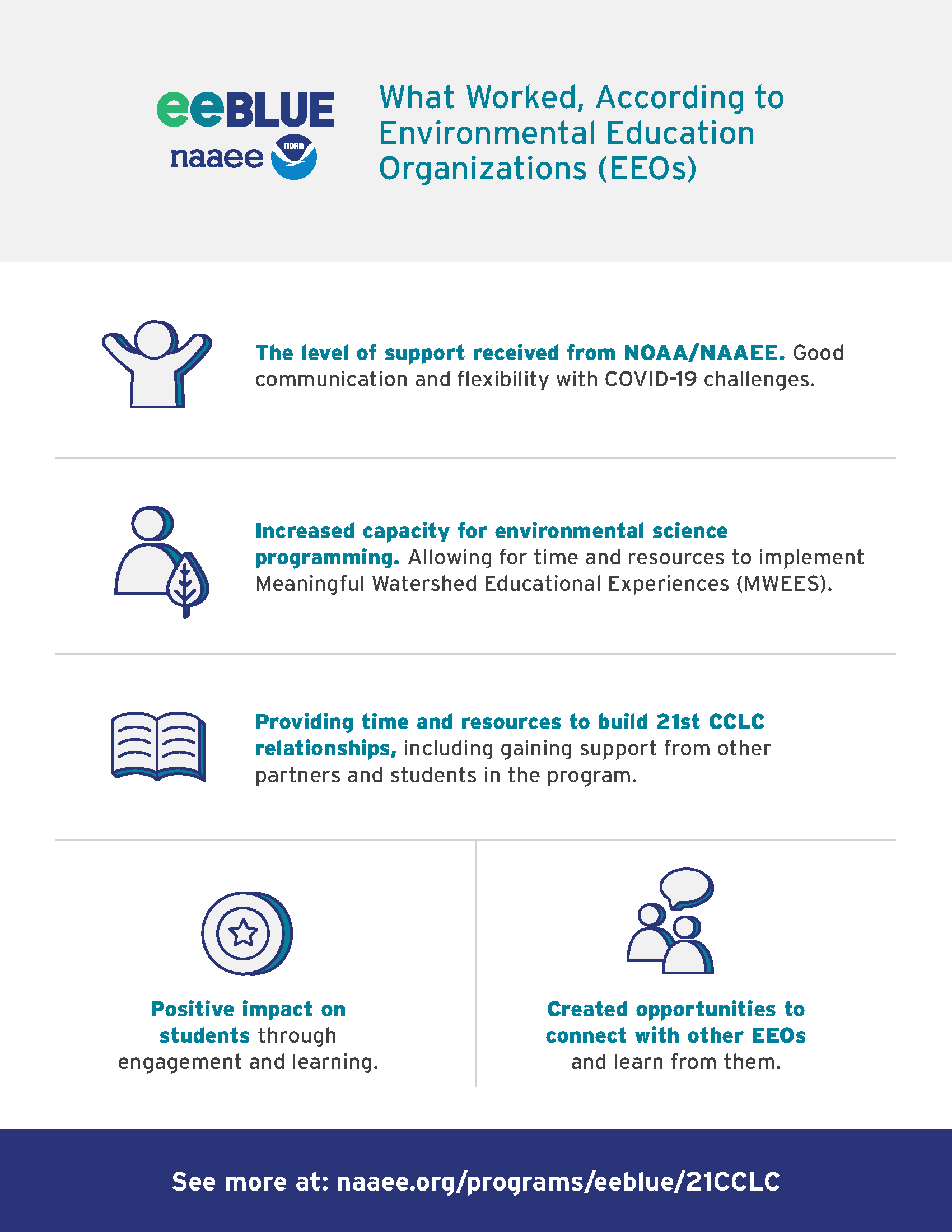
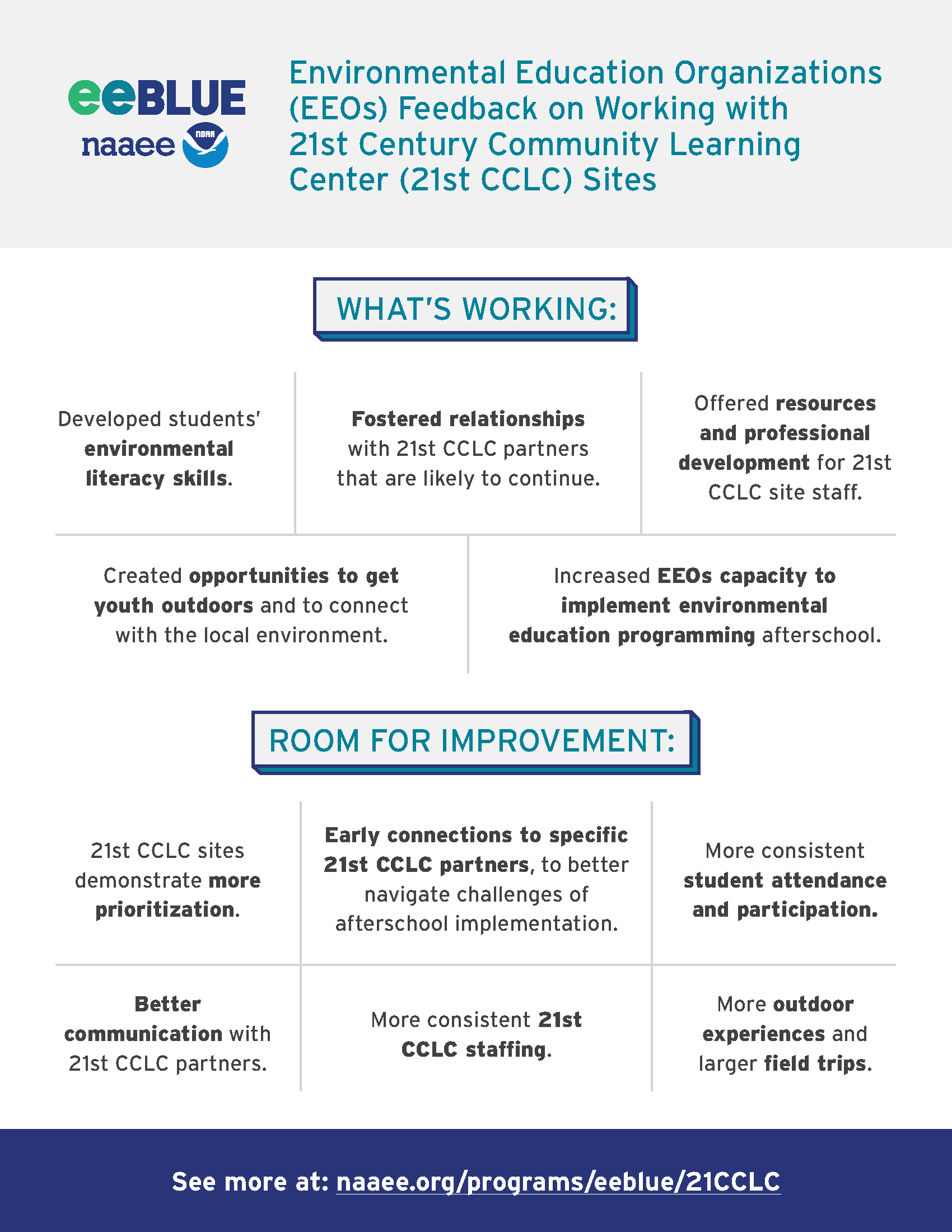
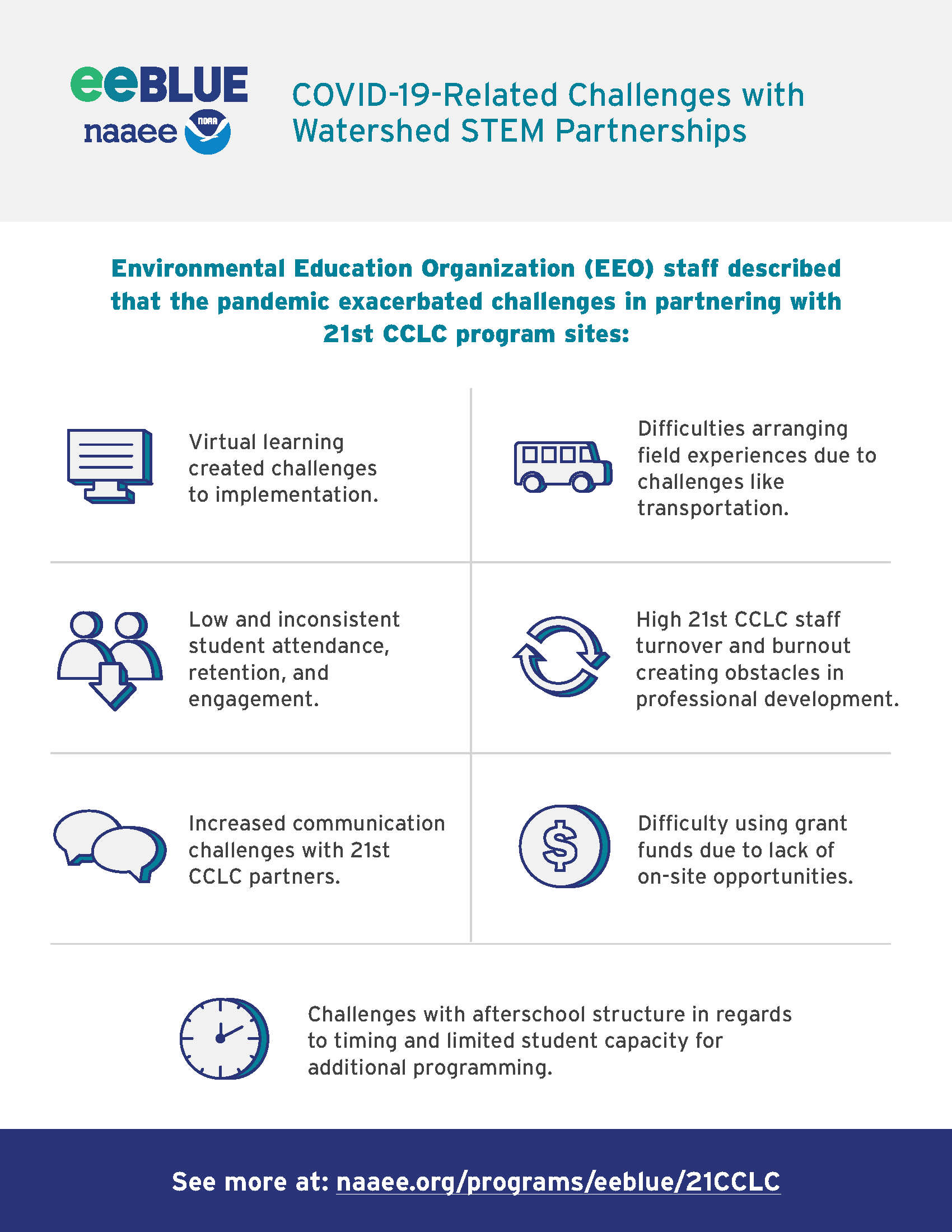
Download and share PDFs (accessible) of these 21CCLC infographics:
eeBLUE 21stCCLC Evaluation Infographics (All)
eeBLUE 21stCCLC Infographic: Suggestions for Success
eeBLUE 21stCCLC Infographic: EEO Suggestions for Success
eeBLUE 21stCCLC Infographic: What Worked
eeBLUE 21stCCLC Infographic: EEO Feedback
eeBLUE 21stCCLC Infographic: COVID-19 Challenges
Meet the eeBLUE Watershed STEM Grantees
Image

View the full list of grantees and see where they are working. Follow the Watershed Chronicles blog series to hear how the grantees implemented their projects, adapted to challenges, and worked collaboratively toward a blue planet.
Check out more in-depth grantee spotlights below.
Image
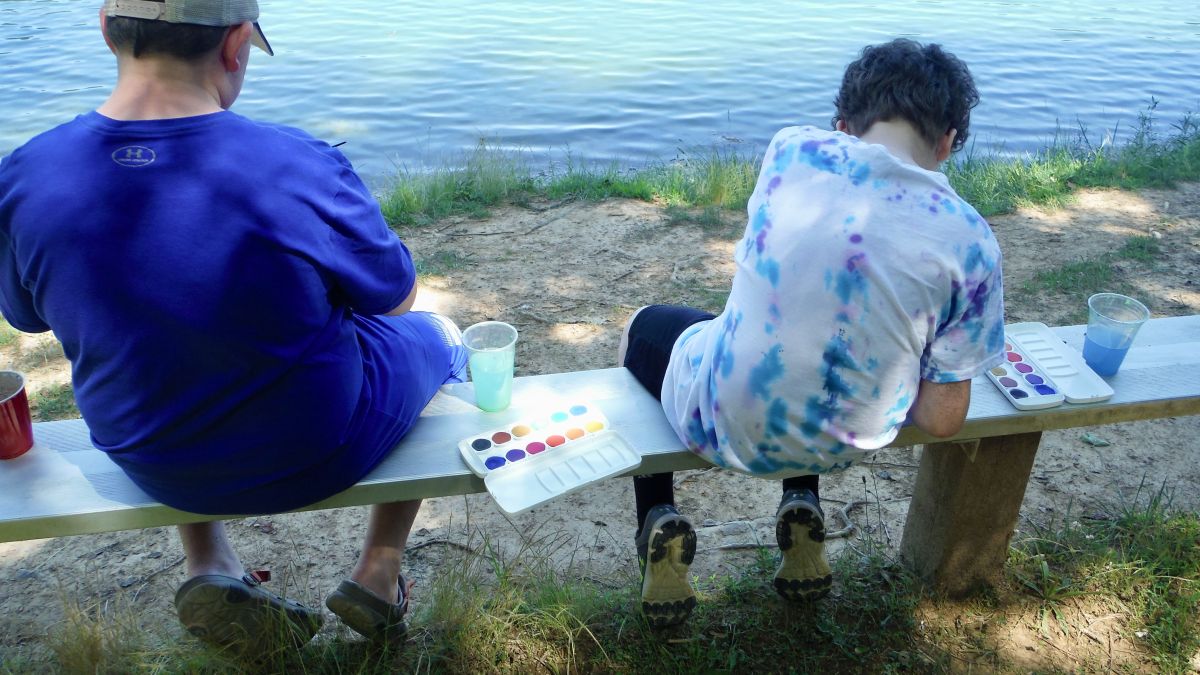
Boxerwood Education Association, Virginia
Image
Florida Gulf Coast University, Florida
Image
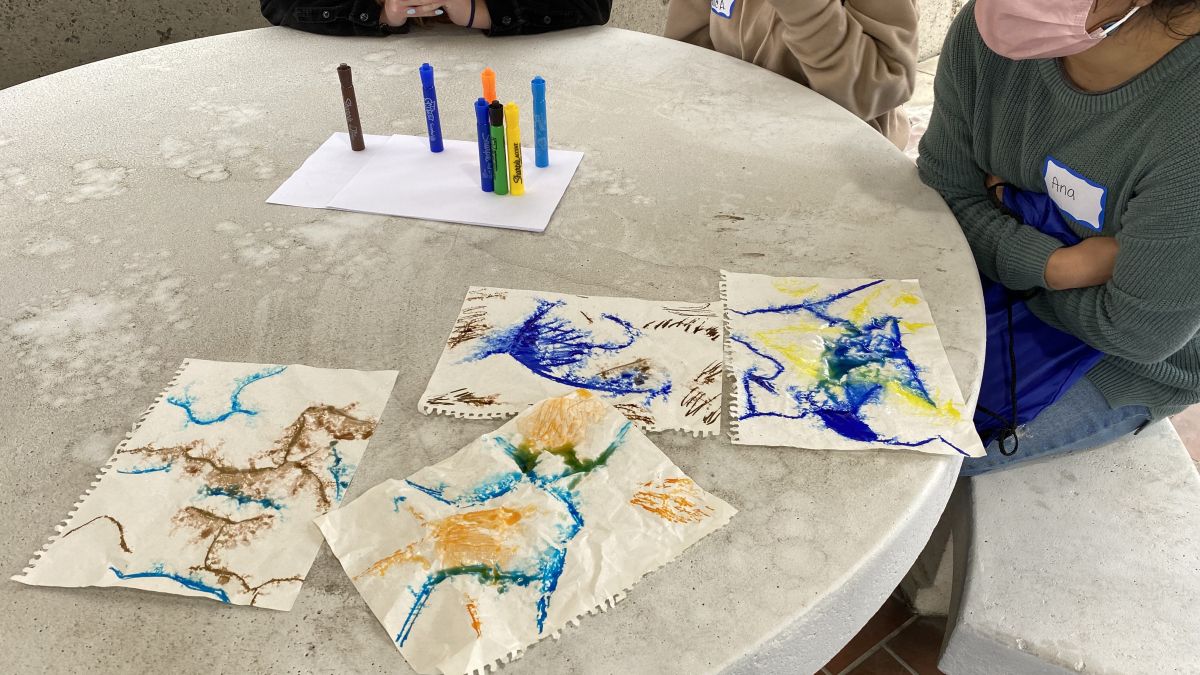
Stanislaus County Office of Education, California
eeBLUE Grant in Action—Virginia
Located in mountainous western Virginia, Boxerwood Education Association has partnered with three rural school divisions connecting students with watershed STEM education through the eeBLUE grant program of NOAA and NAAEE.
eeBLUE Grant in Action—California
Jose Marquez, project coordinator at the Stanislaus County Office of Education, shares the value and joy of giving students opportunities for hands-on experience with their local watersheds during a visit to Natural Bridges State Beach.
eeBLUE Grant in Action—Texas
Citizens’ Environmental Coalition, Galveston Bay Foundation, Artist Boat, and Pasadena ISD partner with NOAA and NAAEE to bring Watershed STEM Education to students in Texas.
What the Grantees Are Saying
Science Perspectives: Derek Esibill
In response to the social distancing mandate and in efforts to both protect our students and the places we would like to take them to engage in meaningful watershed educational experiences, the Pacific American Foundation’s Kilo Kai program is planning on using GoPro Max 360 cameras to combine still and video imagery to create an immersive experience where students can walk through an entire watershed from the ridges to the reefs. —Derek Esibill, from the Pacific American Foundation in Hawaii
Insights from the Northwest: Kelly Steffan
This opportunity to help youth learn about and discover ways to protect their watershed couldn’t come at a better time. Aside from the many health benefits of connecting to nature, both physical and mental, empowering youth to find their voice and learn ways they can help protect the watershed will have ongoing positive impacts on these local communities. —Kelly Steffan, from the Environmental Science Center in Washington
